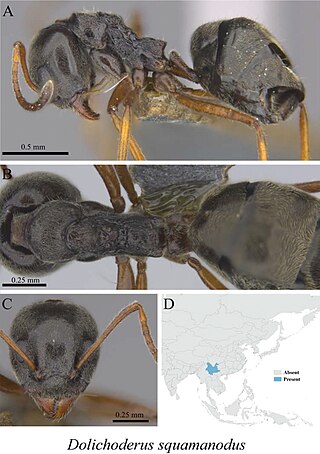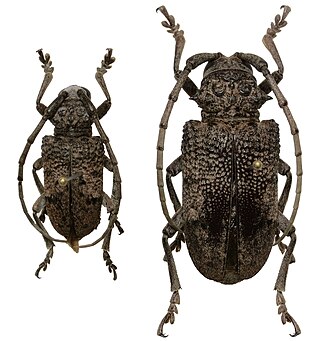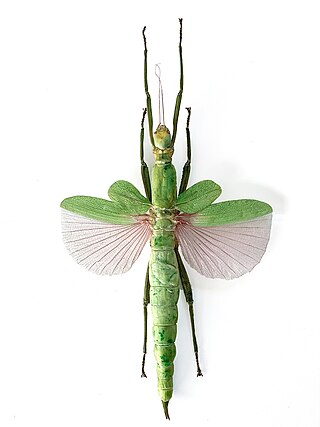
Jean Guillaume Bruguière was a French physician, zoologist and diplomat.

Guillaume-Antoine Olivier was a French entomologist and naturalist.

Dolichoderus is a genus of ants found worldwide.
Cychrus bispinosus is a species of ground beetle in the subfamily of Carabinae that can be found in the following Chinese provinces: Gansu, Henan, Hubei, Shaanxi, and Sichuan. It was described by Deuve in 1989.

Dolichoderus balticus is an extinct species of Eocene ant in the genus Dolichoderus. Described by Mayr in 1868, the fossils of a worker, queen and male of the species were discovered in the Baltic Amber.
Dolichoderus brevicornis is a species of ant in the genus Dolichoderus. Described by Dlussky in 2002, remains of the species were discovered in the Baltic Amber.
Dolichoderus elegans is an extinct species of Eocene ant in the genus Dolichoderus. Described by William Morton Wheeler in 1915, the fossilised remains of the species were found in the Baltic amber.

Dolichoderus kinabaluensis is a species of ant in the genus Dolichoderus. Described by Dill in 2002, the species is endemic to Borneo.
Dolichoderus kutscheri is an extinct species of ant in the genus Dolichoderus. Described by Dlussky in 2008, the fossils of the species were found in the Bitterfeld amber, and is most likely to be from the Late Oligocene.
Dolichoderus pastorulus is a species of ant in the genus Dolichoderus. Described by Dill in 2002, the species is endemic to Borneo.

Dolichoderus punctatus is an extinct species of Eocene ant in the genus Dolichoderus. Described by Dlussky in 2008, fossils of the species were found in the Baltic Amber.

Dolichoderus squamanodus is a species of ant in the genus Dolichoderus. Described by Xu in 2001, the species is endemic to China.

Dolichoderus sulcaticeps is a species of ant in the genus Dolichoderus. Described by Mayr in 1870, the species is endemic to Borneo, Indonesia, Malaysia, Thailand and Vietnam.

Dolichoderus taschenbergi is a species of ant in the genus Dolichoderus. Described by Mayr in 1866, the species is endemic to Canada and the United States.

Dolichoderus thoracicus is a species of ant in the genus Dolichoderus. Described by Smith in 1860, the species is widespread in Asia.

Dolichoderus vectensis is an extinct species of the Oligocene ant in the genus Dolichoderus. Described by Horace Donisthorpe in 1920, the fossils of the species were found in the United Kingdom.
Chelon bispinosus is a fish of the family Mugilidae. It is one of seven species in the genus Chelon. It is endemic to waters near Cape Verde in the east central Atlantic Ocean. This species is found in the neritic zone.
Dolichoderus pinguis is an extinct species of formicid in the ant subfamily Dolichoderinae known from a fossil found in Asia. The species is one of a number in the genus described from fossils.

The Fig-tree Borer Longhorn Beetle, or Fig Tree Borer, is a species of beetle in the family Cerambycidae. It was described by Johan Christian Fabricius in 1792, originally under the genus Lamia. It has a wide distribution throughout Africa. It feeds on Pyrus communis, Ficus carica, Salix babylonica, Cupressus sempervirens, and Vitis vinifera.

Platycrana is the type genus of the reconstituted subfamily Platycraninae: which are stick insects from the Asia-Pacific region. They belong to the monotypic tribe PlatycraniniBrunner von Wattenwyl, 1893.













